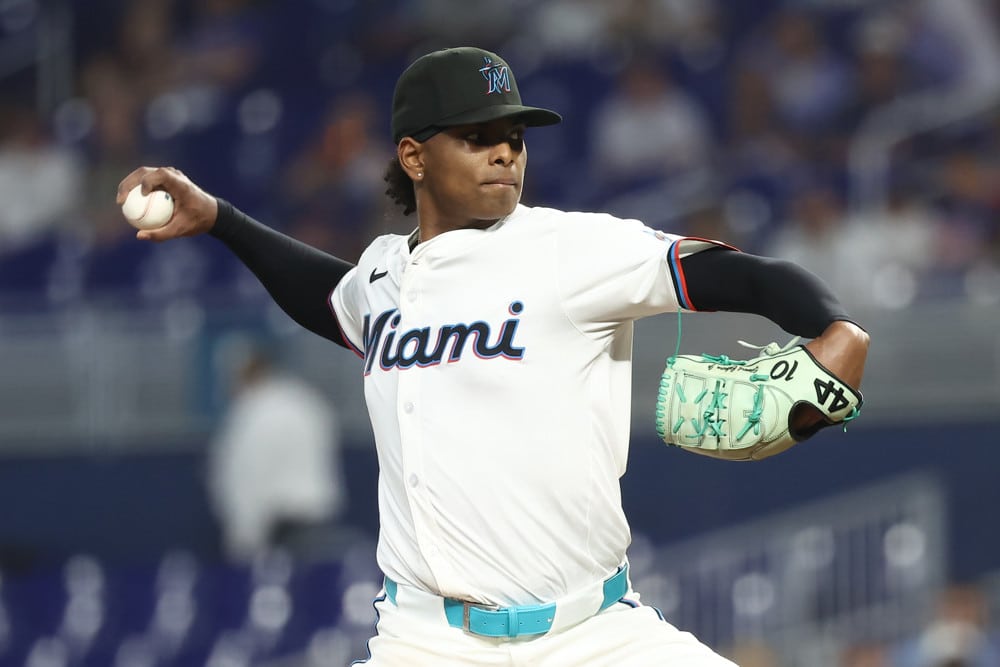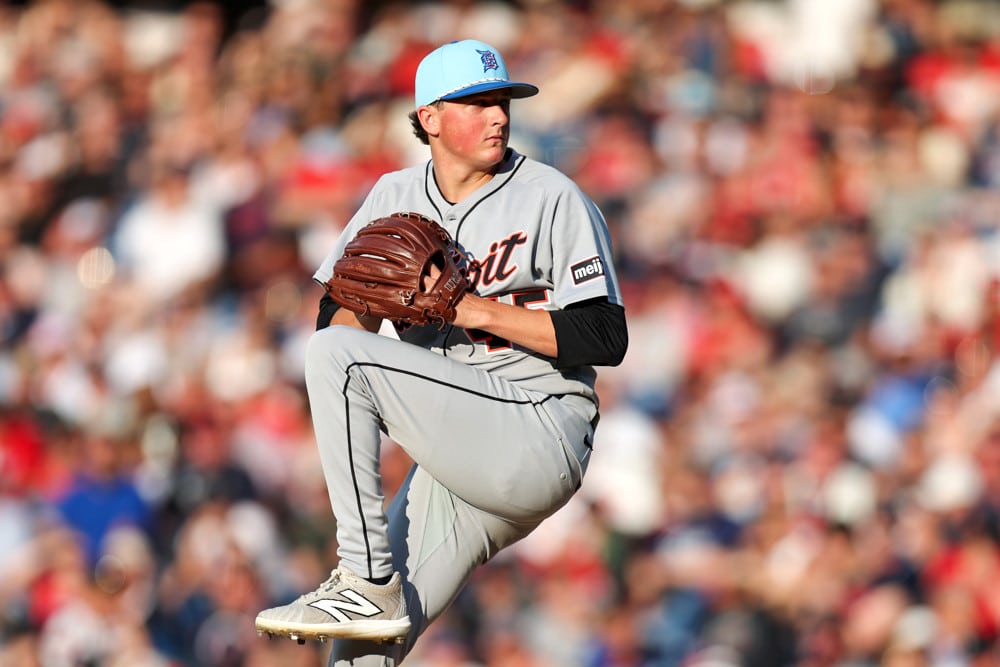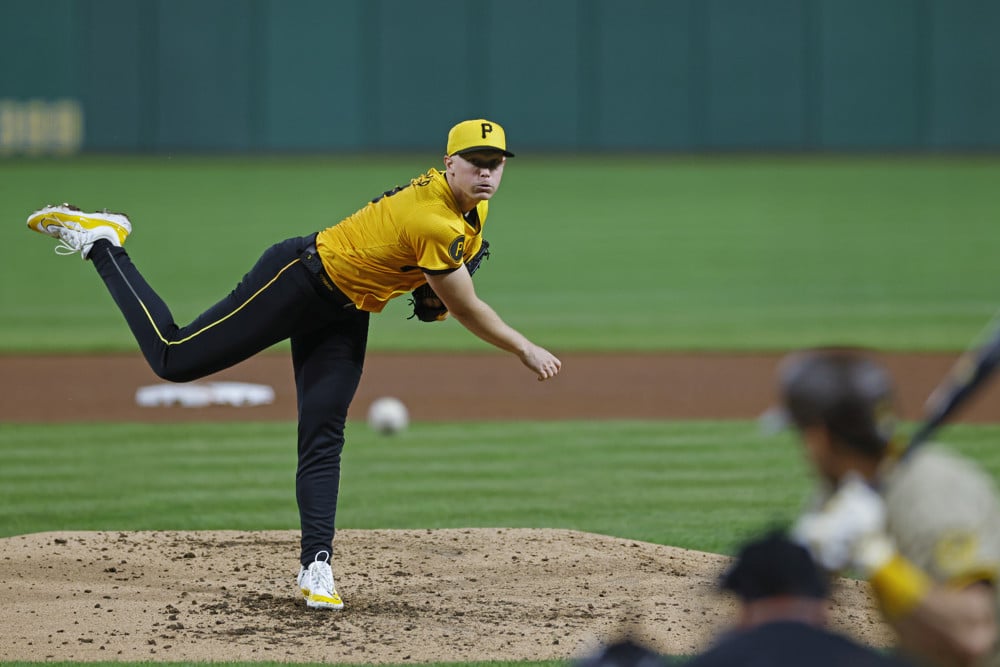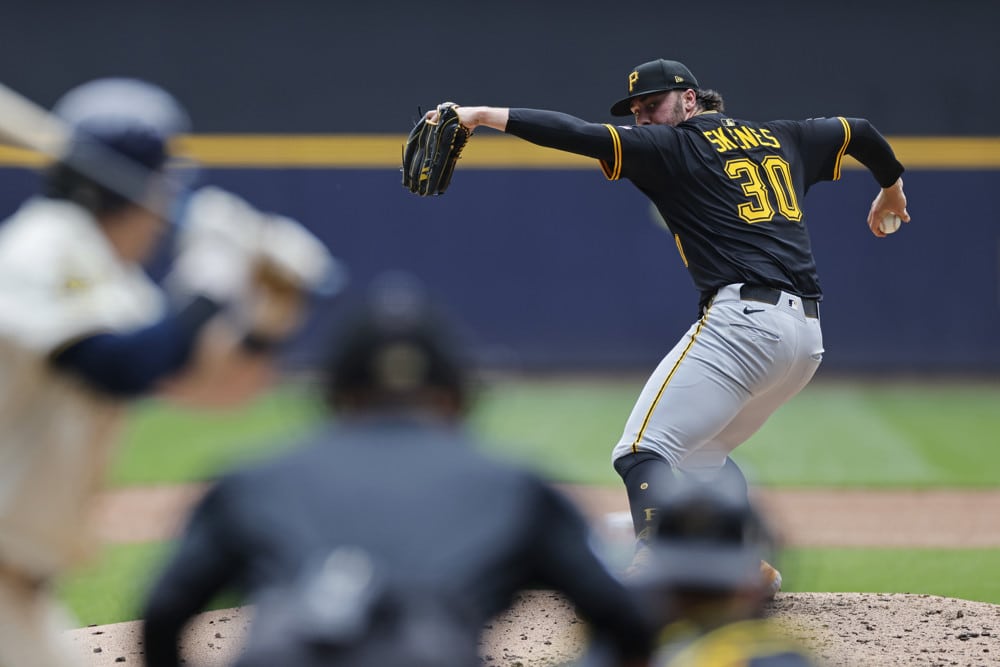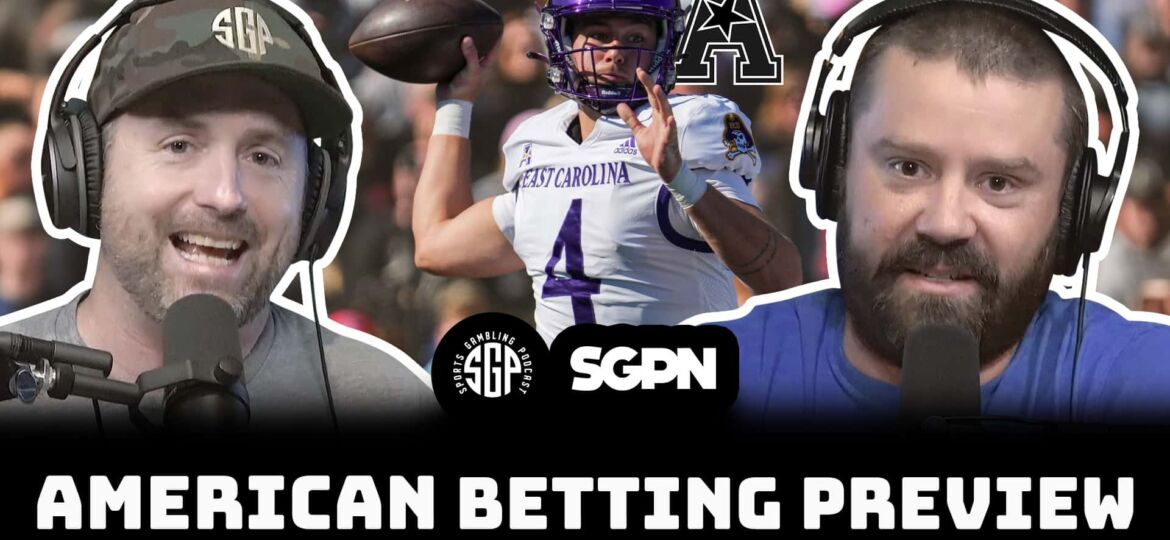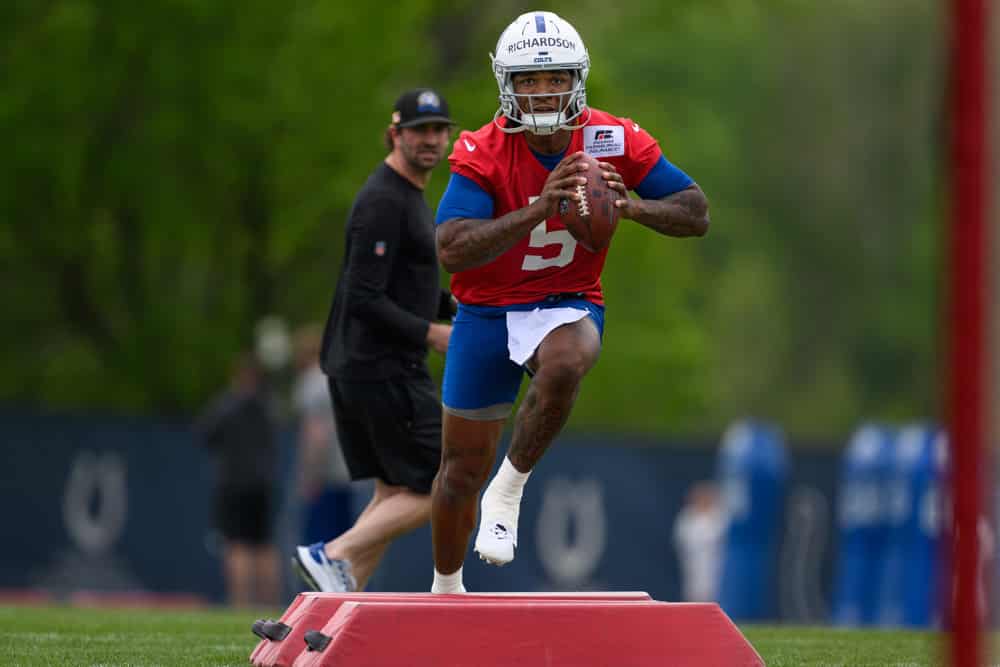
Drafting a player who has yet to take a snap in the NFL is already a risk. Drafting a rookie with a current injury or injury history can be a nightmare. The NUMBER ONE risk factor for an injury is a previous injury to that body part. So by default, every player who suffers a major injury is now at some level of increased risk for reinjury.
For this reason, a player’s injury situation and history MUST be considered before drafting them. Therefore, I am here to help guide you through this tricky NFL Rookies Injury Risk Assessment!
MORE SGPN FANTASY FOOTBALL CONTENT
Follow SGPN Fantasy Football on Youtube
NFL Rookies Injury Risk Assessment
Hendon Hooker (QB) Detroit Lions
Injury: ACL Tear
Injury Date: 11/19/2022
Expected Recovery Timeline: 9-12 months
Time from injury to Week 1, 2023: 292 days (~9.5 months)
Players Age: 25
Injury History: None
Injury Breakdown
The Tennessee Volunteers were one of the most surprising teams in college football last year. This was in large part due to the incredible play of their QB, Hendon Hooker. But, unfortunately, just as talks of a National Championship were beginning to grow, tragedy struck Knoxville as Hooker went down awkwardly in a game late in the season and tore his ACL.
With the injury occurring in mid-November, this cooled off interest from most NFL teams. This allowed the Detroit Lions to draft Hendon Hooker in the third round this year.
Although Hendon Hooker has claimed that he will be “100%” cleared by the start of the season, I think it is still too early to tell and unlikely. He is looking at about nine and half months of recovery before the start of the season. Typically, recovery takes between nine and twelve months, with a push towards eleven or twelve months before return to sport.
A higher reinjury risk has correlated with athletes returning from an ACL reconstruction at or before nine months. The good news for the now Detroit QB is that it appears only his ACL was injured and needs to be repaired from the surgery. An ACL tear typically involves damage to other ligaments or the meniscus, which only complicates and furthers the rehab process.
We can look towards his head coach for a clearer picture of Hooker’s 2023 season outlook. Dan Campbell said the Lions are looking at his rookie season as a “redshirt” year. As a result, not only does Hooker have to overcome so many physical hurdles, but his own team may limit his return to the field.
Risk Level: High
Jaxon Smith-Njigba (WR) Seattle Seahawks
Injury: Hamstring Strain
Initial Injury Date: 9/3/2022
Re-injury Date #1: 9/17/2022
Re-injury Date #2: 10/22/2022
Expected Recovery Timeline: 3-4 months
Time from initial injury to Week 1, 2023: 370 days (~1 year)
Players Age: 21
Injury History: 2019 [High School] – AC sprain (1 game)
* ( ) indicates time missed due to injury *
Injury Breakdown
After truly bursting onto the scene in the 2021 Rose Bowl game, former Ohio State WR Jaxon Smith-Njigba (JSN) was poised for a breakout year. Unfortunately, this plan was derailed in their first game, where he injured his hamstring. This would start a series of several weeks where he would try to play and ultimately reinjure the hamstring. This was not the most surprising news, as hamstring strains carry with them one of the highest reinjury rates of all musculoskeletal injuries.
A hamstring strain refers to damage to the muscle in the back of the upper leg, typically due to a rapid overstretching or lengthening of the muscle in something such as sprinting. For this reason, it was initially concerning when Smith-Njigba opted out of the 40-yard dash at the NFL Combine. However, he redeemed himself by running a 4.48 at the Ohio State Pro Day.
With over a year from his initial injury to the start of the NFL season, his hamstring should be healed by then. However, the most significant risk factor for a hamstring injury is a PREVIOUS hamstring injury.
Athletes are two to six times more likely to reinjure their hamstring than those with no injury history. Due to this nugget and how much these injuries disrupt a WR’s playing ability, I am still cautious about drafting JSN. My biggest concern is the fact that he reinjured the SAME injury TWICE in a matter of two months, leading to a complete derailment of his season.
Risk Level: Moderate
Luke Musgrave (TE) Green Bay Packers
Injury: MCL Tear
Injury Date: 9/10/2022
Expected Recovery Timeline: 4-6 months
Time from injury to Week 1, 2023: 362 days (~1 year)
Players Age: 22
Injury History: 2018 [High School] – Concussion (2 games)
* ( ) indicates time missed due to injury *
Injury Breakdown
Luke Musgrave is another player whose final college season did not finish as expected, landing him on this NFL Rookies Injury Risk Assessment. In the second game of the season, he injured his knee and completely tore his MCL. The tear must have been significant, as the decision was made to repair the ligament surgically. Typically, surgery is avoided with MCL injuries due to the high healing potential of the ligament.
This would have deflated most players, but Musgrave was determined to return to the field for this year’s Senior Bowl. Not only did he make it to the field, but he impressed all Senior Bowl week with his speed and route running. His return was a great sign for his draft stock and should boost the confidence of fantasy managers, as it did the Green Bay Packers.
Being fully medically cleared, Musgrave finds himself in a great situation where he is already the starting TE as of the team’s current depth chart. While there are some questions regarding his run-blocking ability, Musgrave should be a key option in the passing attack for Jordan Love this year.
Risk Level: Low
Dalton Kincaid (TE) Buffalo Bills
Injury: Lumbar Spinal Fracture
Injury Date: 11/26/2022
Expected Recovery Timeline: 4-6 months
Time from injury to Week 1, 2023: 285 days (~9.5 months)
Players Age: 23
Injury History: 2022 [college] – AC sprain (1 game)
* ( ) indicates time missed due to injury *
Injury Breakdown
New Bills TE Dalton Kincaid put up an impressive resume in his last collegiate season at Utah. He led his team in receptions with 70, adding 890 receiving yards and 9 TDs. Unfortunately, near the end of the season, this was put in jeopardy by him injuring his lower back. He suffered a small fracture to his lumbar spine (low back) after being landed on by a defender while lying on his back with his knees bent.
Due to the location and size of the injury, initial imaging came back negative, and he actually played the next week in the Pac-12 championship. However, after a lackluster performance, further imaging found the fracture, and he has been recovering from the injury since.
Despite being unable to participate in the NFL Combine nor his Pro Day, Kincaid was drafted by the Buffalo Bills in the first round. His draft stock was aided by his doctor’s letter written in mid-April, documenting his progress and medically clearing him for football. The doc noted improvements in his pain, function, and MRI imaging. This clearance came about 4.5 months after his injury, which is an appropriate amount of time for the bone to heal from a small fracture.
I am not rushing to draft Kincaid above his market value. Personally, I want to see him on the actual field running routes and taking contact before I feel comfortable drafting him. We need to see how his low back responds to normal football activities. Also, he does not come into a situation where he is guaranteed a significant amount of playing time. It may take some time for the rookie to find his role in this already high-powered Bills offense.
Risk Level: Moderate… for now
Jordan Addison (WR) Minnesota Vikings
Injury: Ankle Injury
Injury Date: 10/15/2022
Expected Recovery Timeline: 2-3 months
Time from injury to Week 1, 2023: 252 days (~8.5 months)
Players Age: 21
Injury History: None
Injury Breakdown
After making a big splash in the transfer portal, WR Jordan Addison did not quite have the year many expected at USC. After an incredible year at Pitt, where he won the 2021 Biletnikoff Award, his production was almost cut in half with the Trojans. A nagging ankle injury that he picked up midway through the season contributed to this.
Addison was out of the lineup for about a month, missing two games, but even upon his return, he was not fully healthy. Then, an apparent setback with the ankle caused him to sit out of the Cotton Bowl.
Addison was likely dealing with a low ankle sprain which resulted in damage to the lateral ligaments of the ankle. These types of ankle sprains are fairly common but do come with a moderate reinjury risk within the first several weeks of returning to play. However, at this point, Addison’s ankle is fully healed, and he showed this through his participation in both the NFL Combine and his PRO Day.
Despite his smaller stature, I look to Addison’s college production and injury history or rather lack thereof. This makes me rank him on the low end of this NFL Rookies Injury Risk Assessment. Even in a “down year” at USC, he did still put up 875 receiving yards with 8 TDs.
Risk Level: Low
Anthony Richardson (QB) Indianapolis Colts
Injury: Hamstring Strain and Meniscus Tear
Injury Date: 9/11/2021
Reinjury Date: 9/3/2022
Expected Recovery Timeline: 9-12 months
Time from reinjury to Week 1, 2023: 369 days (~1 year)
Players Age: 20
Injury History: 2021 [college] – Hamstring strain (2 games), 2021 [college] – Meniscus Tear, 2021 [college] – Concussion (1 game)
* ( ) indicates time missed due to injury *
Injury Breakdown
There is no doubt that Anthony Richardson is a dynamic player when he is healthy and on the field. However, due to the nature of his play style, staying healthy has proven difficult for him. In the 2021 season, Richardson picked up three separate injuries as QB2 for the Gators.
Richardson even needed surgery after that season, as he further injured the meniscus of one of his knees that stemmed from an old injury in high school. It was not confirmed whether the surgery was to repair or remove the meniscus, but either way, this correlates to some permanent damage to the knee. In addition, previous meniscus surgery has been linked to future knee problems such as arthritis and even ACL tears.
Richardson also picked up another injury which proved to be significant. In Week 2 of the 2021 season, he injured his hamstring on a long run against USF. Unfortunately, this injury affected not one but two seasons for the Gators’ QB. After having an electric Week 1 of the 2022 season, it seems Richardson reinjured that same hamstring.
This led to a significant loss in his mobility and took away his biggest weapon: his threat to run. In addition, as mentioned previously in this article, hamstring injuries are one of the most burdensome sports injuries to deal with. Suffering an initial hamstring injury and a reinjury of the same hamstring puts Richardson at an increased risk for future lower body problems.
Risk Level: HIGH
Thanks for reading this NFL Rookies Injury Risk Assessment! For the most up-to-date NFL/CFB injury news and analysis, follow me on Twitter @SGPNFootballDoc!




